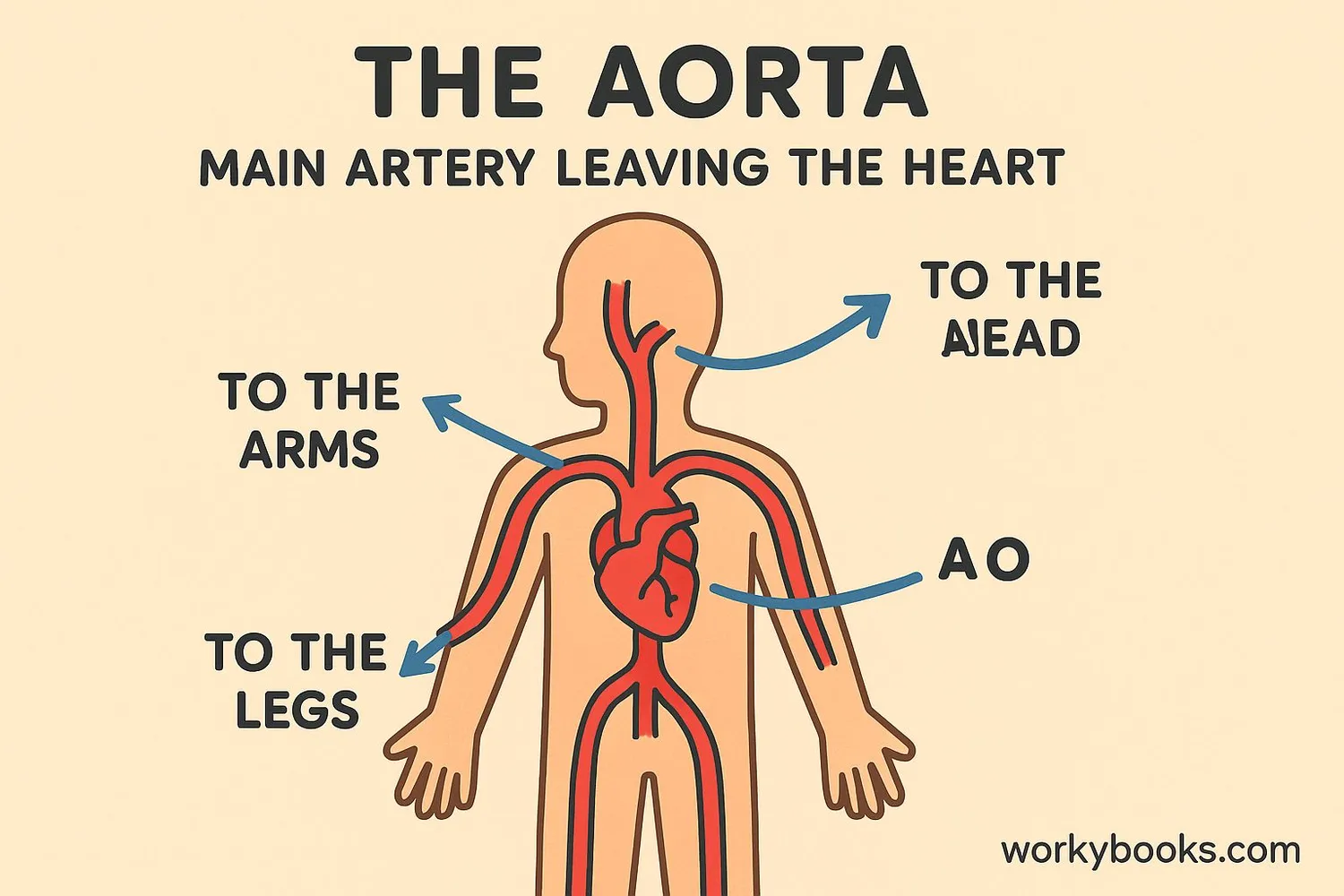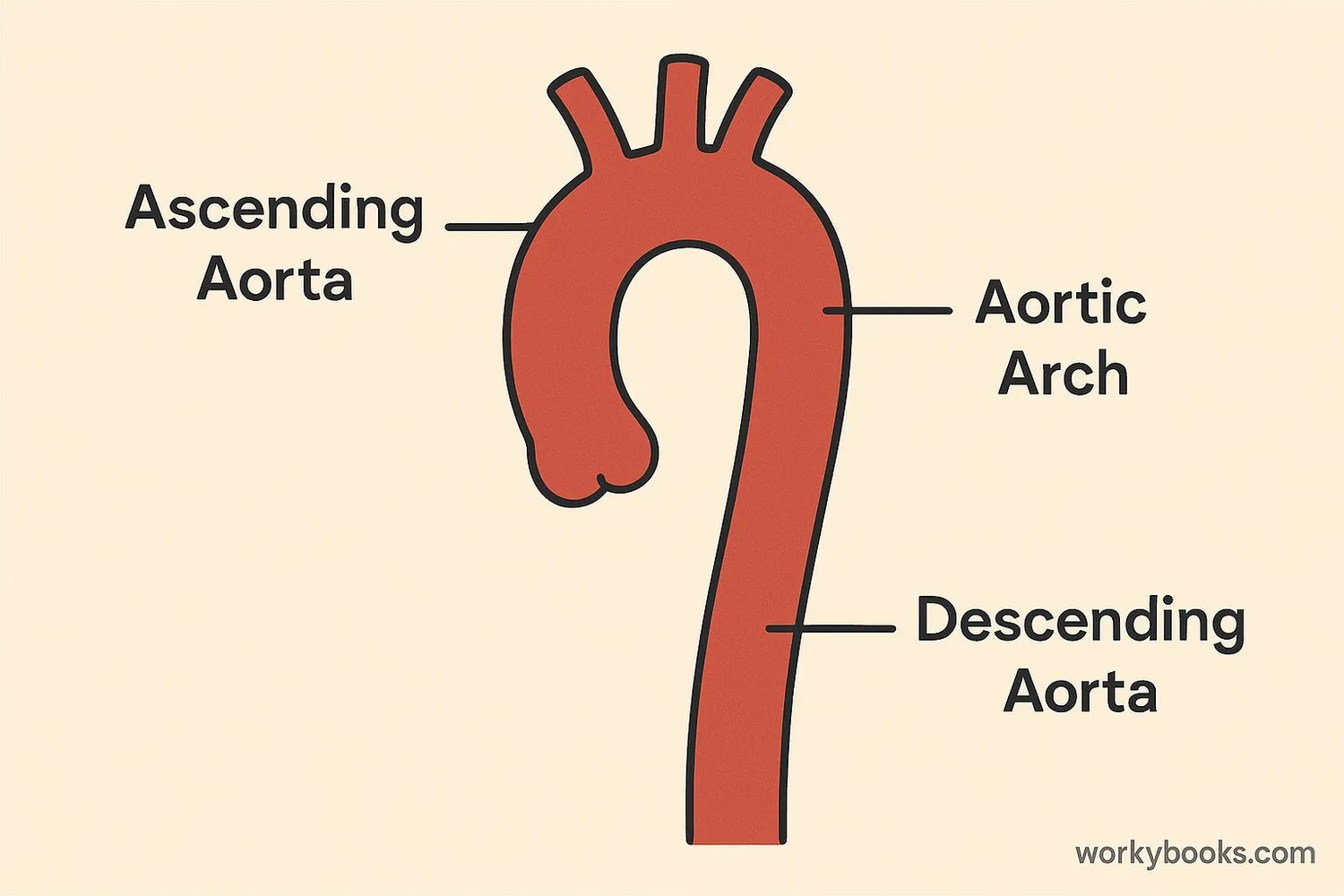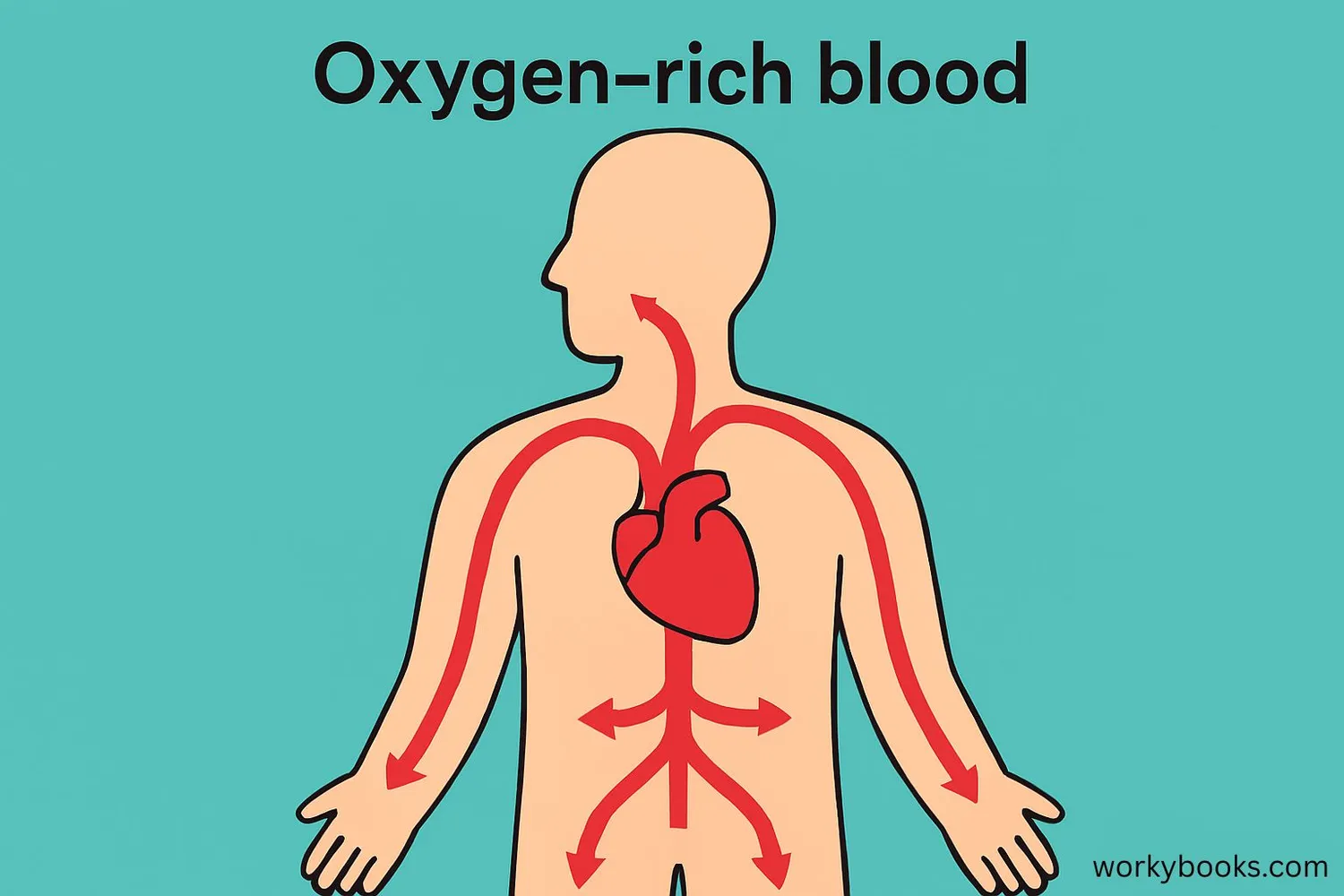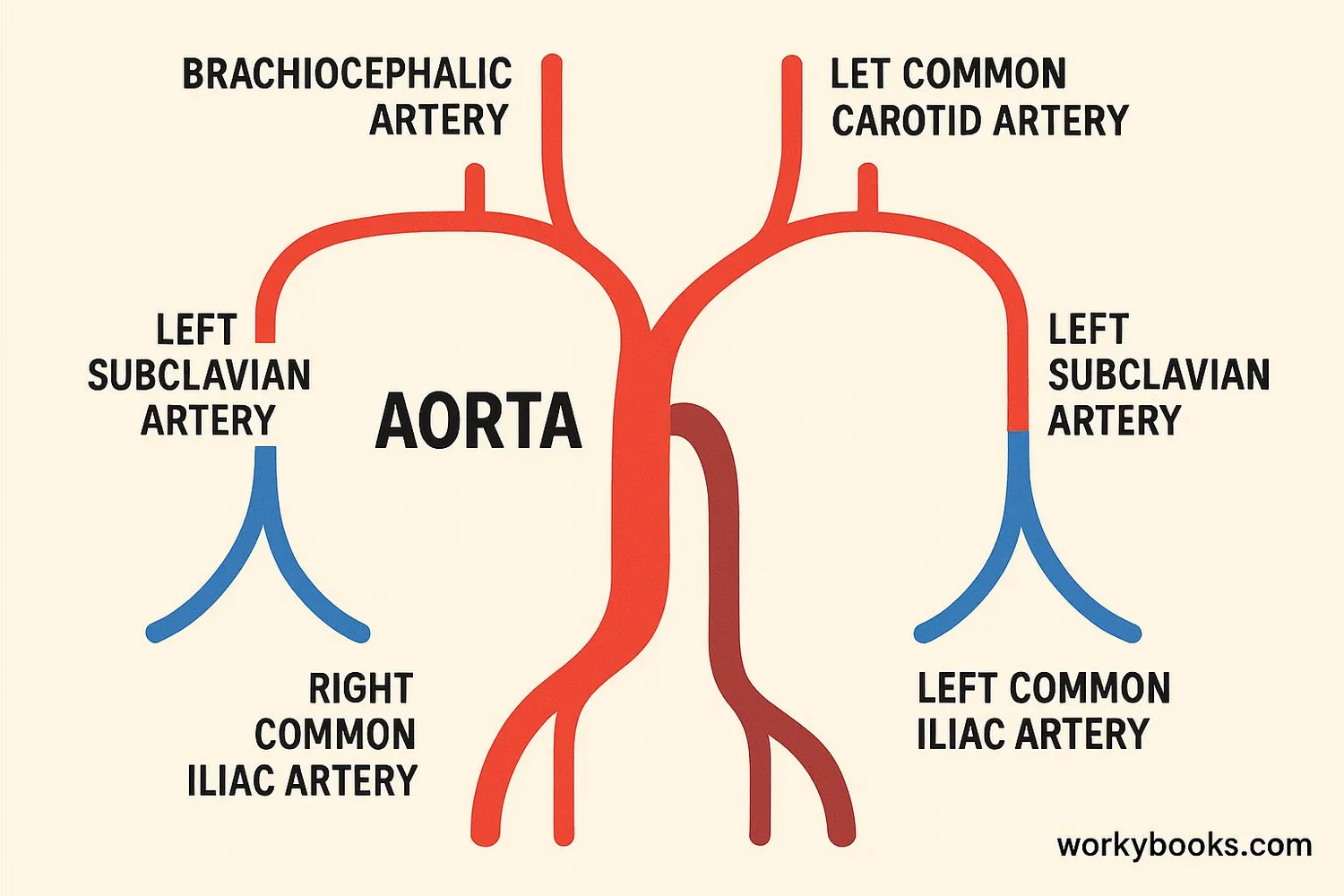Aorta - Definition, Examples, Quiz, FAQ, Trivia
Discover how your body's largest blood vessel keeps you alive!
What is the Aorta?

The aorta is your body's main blood vessel and the largest artery in your entire body! It's like the superhighway of your circulatory system, carrying oxygen-rich blood from your heart to all parts of your body.
Think of your heart as a powerful pump. When your heart beats, it pushes blood out through the aorta. This blood contains oxygen and nutrients that every cell in your body needs to survive and function properly. Without your aorta, your body couldn't get the oxygen it needs!
Size Matters!
The aorta is about the width of a garden hose! In adults, it's approximately 1 inch (2.5 cm) in diameter.
Aorta Anatomy

The aorta isn't just one straight tube - it has several important sections that work together:
Ascending Aorta
The first section that rises up from the heart
Aortic Arch
The curved top part that looks like a candy cane handle
Descending Aorta
The long section that travels down through your chest and abdomen
Branches
Smaller arteries that deliver blood to specific body areas
Along its path, the aorta has several branches that deliver blood to different parts of your body. These include arteries that go to your brain, arms, kidneys, liver, and legs. Each branch is like an exit ramp on a highway, taking blood where it needs to go!
How the Aorta Works

The aorta works like the main pipeline in your body's delivery system. Here's how it functions:
Receives Blood
The left ventricle pumps oxygen-rich blood into the aorta
Transports Blood
Carries blood away from the heart to the body
Distributes Blood
Branches deliver blood to specific organs and tissues
With each heartbeat, your heart pumps about 2-3 ounces of blood into the aorta. That's about 2,000 gallons of blood pumped through your aorta every day! The aorta's walls are strong and flexible, stretching with each heartbeat to handle the pressure of blood being pumped from the heart.
Why the Aorta Matters

The aorta is essential for your survival! Here's why it's so important:
Oxygen Delivery
Brings oxygen to every cell in your body
Nutrient Transport
Delivers nutrients from food to your organs
Waste Removal
Helps carry away waste products from cells
Without a healthy aorta, your body couldn't get the oxygen and nutrients it needs. The aorta also helps regulate blood pressure throughout your body. Its thick, elastic walls expand with each heartbeat to absorb pressure, then push the blood forward when they relax. This helps keep blood flowing smoothly to all your organs.
Aorta Quiz
Test what you've learned about the aorta with this quiz! Answer all 5 questions to see how much you know.
Frequently Asked Questions
Here are answers to common questions about the aorta:
Amazing Aorta Facts
Discover some incredible facts about your aorta!
Size Comparison
If you stretched out all the blood vessels in your body, they would circle Earth twice! The aorta is the largest of these vessels.
Blood Flow Speed
Blood travels through your aorta at about 1 foot per second - that's as fast as you can walk! It slows down in smaller blood vessels.
Animal Aortas
The blue whale has the largest aorta of any animal - big enough for a small child to crawl through! Giraffes have special valves to help blood reach their tall heads.
Medical History
The first successful repair of an aortic aneurysm (a dangerous bulge) was performed in 1923. Today, surgeons perform thousands of these operations each year.


